ISSN ONLINE(2319-8753)PRINT(2347-6710)
ISSN ONLINE(2319-8753)PRINT(2347-6710)
S.Radika1, M.Sudharsan2, K.Gnanaprakash3
|
| Related article at Pubmed, Scholar Google |
Visit for more related articles at International Journal of Innovative Research in Science, Engineering and Technology
In the recent years, due to environmental concerns developed, the nature fibre composites have shown a growth of interest because of their recyclability and biodegradability. Natural fibres can be obtained at a low price using locally available manual labor and eco friendly material in nature. Natural fibres are readily available in large quantities in many countries and they represent a continuous renewable source. In this project we have developed agave fiber polypropylene composites with 3 proportions such as 25/75, 35/65 and 50/50. The technique we used for composite making is compression molding. From these three proportions, 35/65 proportion has high impact strength and tensile strength besides having moderate flexural properties compared to other proportions such as 25/75 and 50/50. The present paper surveys the research work published in the field of agave fiber reinforced polymer composites with special reference to the structure and properties of agave fiber, processing techniques, and the physical and mechanical properties of the composites.
Keywords |
| agave fiber, composites, flexural properties, impact strength, polypropylene, tensile strength |
INTRODUCTION |
| The chemical compositions of agave fibers have been reported by several groups of researches. Plant based fibers mainly consist of cellulose, hemicelluloses and lignin which are major components of the plant cell wall. While cellulose is a linear polymer consisting of glucose units and organized in a fibrillar fashion, hemicelluloses is made up of many different sugar units and is branched and lignin is a complex hydrogen carbon. Since the strength and stiffness of plant based fibers mainly depend on their cellulose content (Jun Tae Kim 2010). Physically, each fiber cell is made up of four main parts, namely the primary wall, the thick secondary wall, the tertiary wall and lumen. |
| The chemical compositions of agave fibers have been reported by several groups of researches. Plant based fibers mainly consist of cellulose, hemicelluloses and lignin which are major components of the plant cell wall. While cellulose is a linear polymer consisting of glucose units and organized in a fibrillar fashion, hemicelluloses is made up of many different sugar units and is branched and lignin is a complex hydrogen carbon. Since the strength and stiffness of plant based fibers mainly depend on their cellulose content (Jun Tae Kim 2010). Physically, each fiber cell is made up of four main parts, namely the primary wall, the thick secondary wall, the tertiary wall and lumen. |
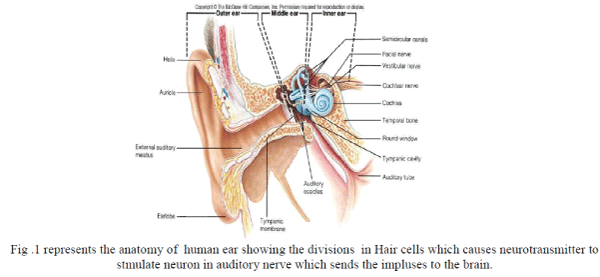 |
| Figure 1 The agave Americana L. plant |
| The cell walls of agave fiber consist several layers of fibrillar structure consisting of fibrillae. In the primary wall, the fibrillae have a reticulated structure. In the outer secondary wall (S1), which is located inside the primary wall, the fibrillae are arranged in spirals with a spiral angle of 40ÃÂ (for agave fiber) in relation to the longitudinal axis of the ce ll. The fibrillae in the inner secondary wall (S2) of agave fibers have a sharper slope, 18 to 25ÃÂ. The thin, innermost, tertiary wall has a parallel fibrillar structure and encloses the lumen. Generally the strength and stiffness of plant fibers depend on the cellulose content and the spiral angle which the bands of micro fibrils in the inner secondary cell wall make with the fiber axis (Kuruvilla Joseph 1990). |
MATERIALS AND METHODS |
2.1 EXTRACTION OF AGAVE FIBERS |
2.1.1. Mechanical Process |
| The mechanical process consists of scrapping the leaves with machines called raspadors under a jet of water [4]. This process is firstly expensive because it needs a lot of water and energy. Secondly, it can modify, by scrapping, some mechanical characteristics of fibers. |
2.1.2. Chemical Process |
| The chemical process, largely used in the past, consists of attacking leaves by sea water (hydrolysis in sea water) in order to dissolve the pulp and to extract the fibers. This process requires nearly 3 months. We have developed a chemical process that is able to extract fibers in 48 hours and which consists of attacking fibers by a 3N sodium hydroxide solution. |
| The obtained fibers are washed in water and then in a dioxane solution. This solution eliminates all the residue of pulp surrounding the fiber surface and makes it clean and white. The same results are obtained by the use of an aqueous solution of NaclO. |
2.3 COMPOSITE MANUFACTURING |
| Compression molding machine is used to produce the composite. The mold is made up of aluminum [250mm*250mm*3mm], the web are cut according to the mold and placed on the mold. Initially the temperature of the compression molding machine is set up to 165° C with 10 bar pressure. Generally the web is placed on the bottom jaw [Immovable] and then the top jaw [Movable] is activated to move downwards and it compresses the web for 10 min. After |
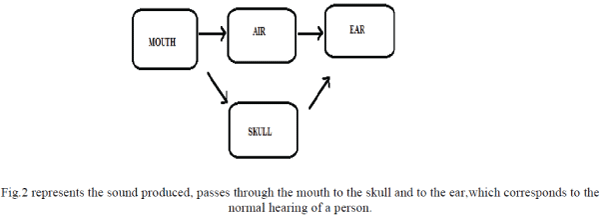 |
| Figure 2 Compression molding machine |
| Ten min by using handle top jaw is lifted and mold is removed from the bottom jaw. And then water is sprayed on the surface of the mold for cooling. After that the composite is removed from the mold. Finally the composites are prepared. |
2.2 PROCESS FLOW |
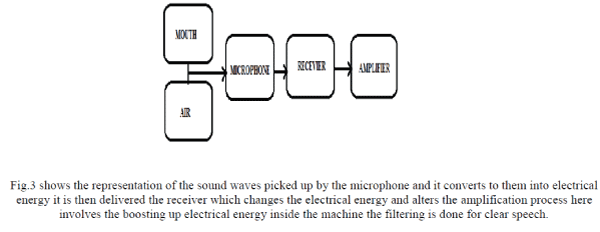 |
| Figure 3 Process flow of compression molding |
| The process flow of compression molding is shown fig.3. In this flow, mentioned the temperature, pressure which is using in the molding machine. |
RESULTS AND DISCUSSIONS |
 |
| TABLE 1 MECHANICAL CHARACTERISTICS OF AGAVE FIBERS |
Inference: |
| We have also noticed that the deformation of fibers progresses in the opposite direction of their tensile modulus with 34.5% for fibers extracted by sea water and 18.5% for the fibers extracted by sodium hydroxide and washed for 24 hours in dioxane. Finally, we have noticed that the highest tensile strength corresponds to the fibers extracted by sodium hydroxide and washed for 24 hours in dioxane :475MPa. |
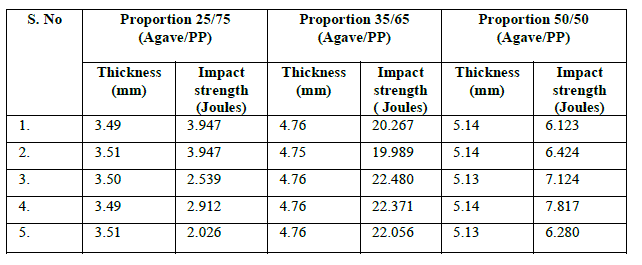 |
| TABLE 2: IMPACT STRENGTH TEST |
| In above table, the impact strength of composite board of different proportion is mentioned, and also explained in below graph. |
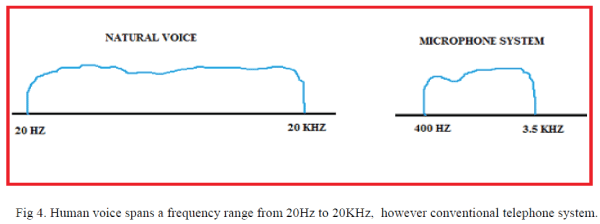 |
| Figure 4: Impact strength |
Inference: |
| The investigation shows that the impact strength of the agave fiber composite of proportion 35/65 is more than the both proportion because the strength of polypropylene is greater than agave fiber. So if we increase or decrease the polypropylene or agave fiber content then the impact strength of the composite will decrease. |
 |
| TABLE 3 TENSILE STRENGTH |
| In above table, the tensile strength of composite board of different proportion is mentioned, and also explained in below graph. |
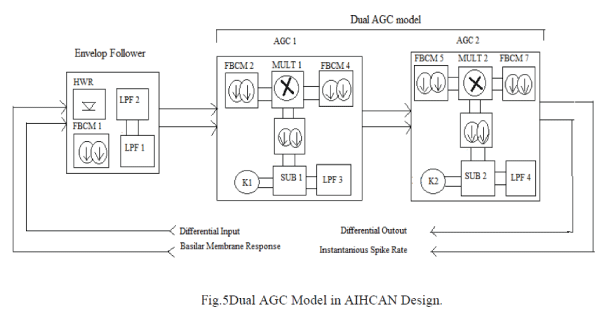 |
| Fig. 5 Tensile strength |
Inference: |
| The investigation shows that the tensile strength of the agave fiber composite of proportion 35/65 is more than the both proportion because the strength of polypropylene is greater than agave fiber. So if we increase or decrease the polypropylene or agave fiber content then the tensile strength of the composite will decrease. |
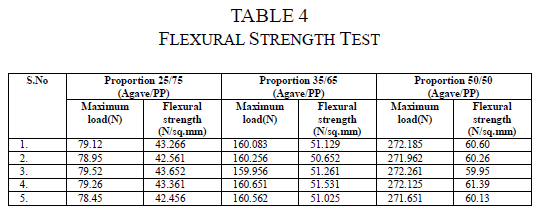 |
| In above table, the Flexural strength of composite board of different proportion is mentioned, and also explained in below graph. |
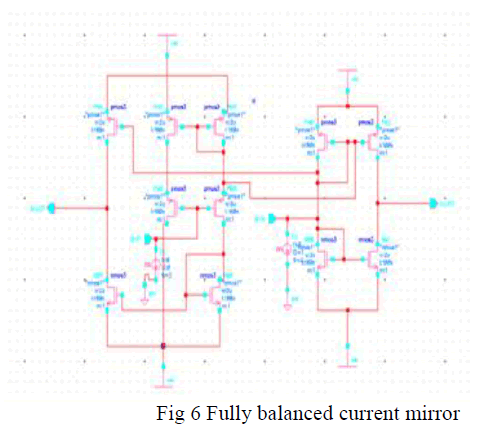 |
| Inference |
| From the figure 6, the flexural strength of the proportion 50/50 is greater than the other two proportions such as 25/75 and 35/65 because the stiffness of agave fiber is lower. So if we increase the agave content the flexural strength will increases. |
CONCLUSION |
| The agave fiber and polypropylene composite were successfully manufactured and the mechanical properties of the composite board have been tested. The impact and tensile strength properties of the agave composite with proportion 35/65 is greater than the other two proportions such as 25/75,50/50 because the strength of polypropylene is greater than agave fiber. So if we increase or decrease the polypropylene or agave fiber content then the tensile strength of the composite will decrease. Then the flexural properties of 50/50 proportion is greater than the other two proportion such as 25/75 and 35/65 because the stiffness of agave fiber is lower. So if we increase the agave content the flexural strength will increases. The agave fiber is easily available and is cost effective. So we conclude that the agave fiber polypropylene composite of proportion 35/65 is well suited for Non-structural applications such as Circuit boards, office tables, cardboards, exam pads, switch boxes etc. |
References |
|